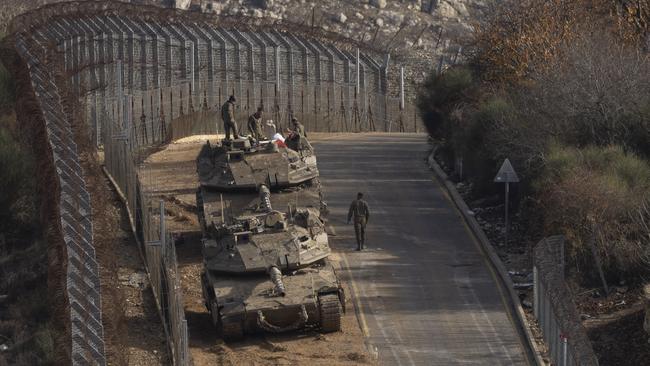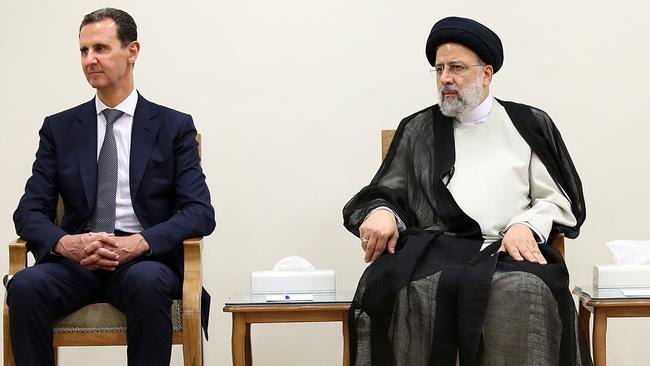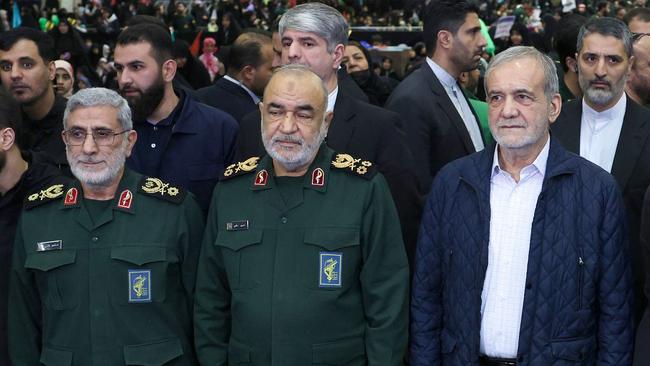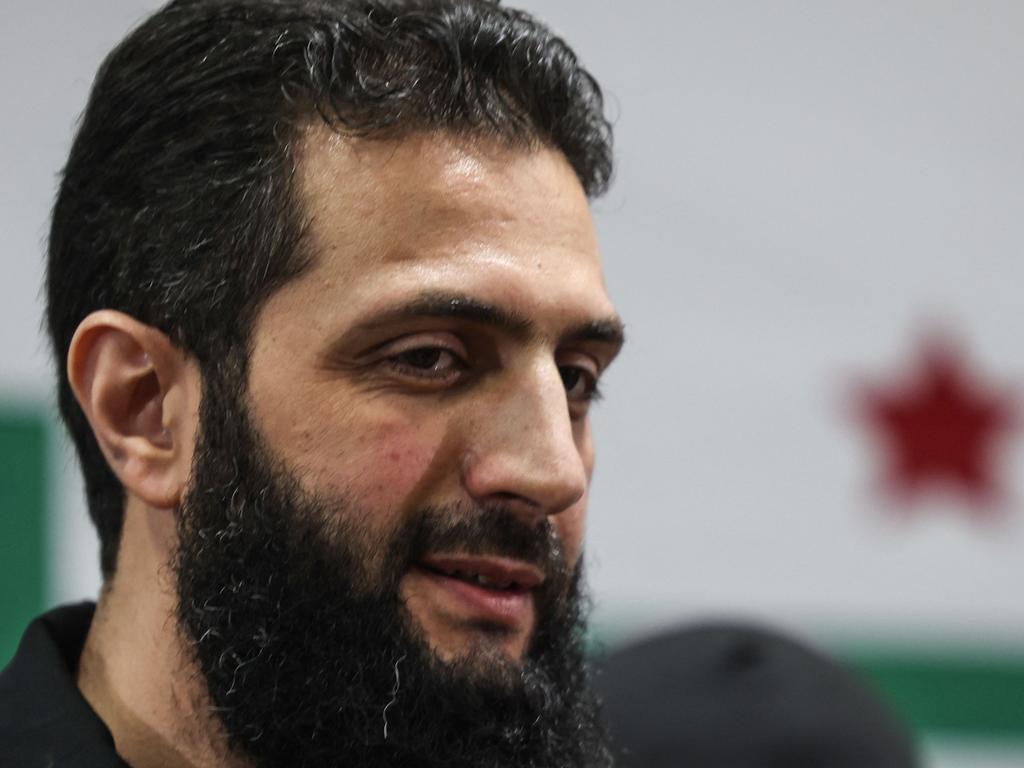Iran pulls most forces from Syria, in blow to Tehran’s regional ambitions
The withdrawal marks the demise of a years-long effort to use Syria as a hub in Tehran’s broader regional strategy and is a major blow to Iran’s ambitions.
Iranian forces have largely withdrawn from Syria following the Assad regime’s December collapse, according to US, European and Arab officials, in a significant blow to Tehran’s strategy for projecting power in the Middle East.
The Iranian withdrawal marks the demise of a years-long effort in which Tehran used Syria as a hub in its broader regional strategy of partnering with regimes and allied militias to spread influence and wage proxy war against the US and Israel. Iranian-backed armed groups in Syria have launched attacks on US forces and aided in attacks on Israel. Members of Iran’s elite Quds Force have now fled to Iran and the militia groups have disbanded, a senior US official said.
The Islamic Republic spent billions of dollars and sent thousands of military personnel and allied fighters to Syria after the Arab Spring uprising in 2011, to prop up the regime of Bashar al-Assad. Syria was Iran’s main state ally in the Middle East and a critical land bridge to Hezbollah – the most powerful militia in Tehran’s self-labelled “axis of resistance” alliance.
Iran, already reeling from Israeli air strikes on its assets and partners in the region, began withdrawing personnel during the dramatic 11-day collapse of the Assad regime’s military late last year. When rebels in Syria launched an offensive in November, Iran’s government was already frustrated with Assad, who had remained on the sidelines over the prior year during Tehran’s multifront conflict with Israel.

Iran’s network in Syria once spanned the length of the country, from the east where the Islamic Revolutionary Guard Corps helped transport weapons and fighters into the country, to Syria’s border with Lebanon, where it helped arm Hezbollah with weapons shipments.
As the Assad regime collapsed, thousands of Iran-backed militia fighters were still in the country, mainly in eastern Syria, with some scattered in Damascus, Aleppo and elsewhere. Most of those in eastern Syria, including IRGC officers, along with Afghan, Iraqi, Lebanese and Syrian fighters, fled to al-Qaim, a border town on the Iraqi side, said Western and Arab officials. Some of the Iranians based in Damascus flew to Tehran, while Hezbollah fighters in the west of the country fled by road to Lebanon, they said.
Iraq’s embassy in Washington and its foreign ministry didn’t return a request for comment. The Iranian mission at the United Nations in New York declined to comment on the departure of forces from Syria.
Asked if the Iranians were completely out of Syria, the State Department’s top Middle East official, Barbara Leaf, said Monday, “Pretty much, yes … It’s extraordinary.” Leaf, the US assistant secretary of state for Near Eastern Affairs, said that Syria was now hostile terrain for Iran. “Which is not to say they will not try to reinsert themselves, but very hostile terrain,” she said.
Iran’s Supreme Leader Ayatollah Ali Khamenei appeared to acknowledge the setback in Syria in Dec. 1 remarks in Tehran: “Some people, due to a lack of proper analysis and understanding, claim that with the recent events in the region, the bloodshed in defence of the shrine was wasted, ” Khamenei said. “They are making this grave mistake; the blood was not wasted.” Iranian officials have justified their presence in Syria and Iraq as a defence of Shia holy shrines.

In the days following Assad’s ouster, the road from Damascus to Beirut was littered with destroyed military vehicles including tanks and mobile rocket launchers. Most of the vehicles were pointed in the direction of the Lebanese border, suggesting a hasty attempt to pull military hardware from the country.
The swift withdrawal marks a dramatic reshaping of the regional order in the Middle East. The shift to the new fledgling government in Damascus, led by the Sunni Islamist group Hayat Tahrir al-Sham that toppled Syria’s longtime dictator, has undercut the influence of Assad’s primary backers, Russia and Shiite-led Iran.
For Iran, Syria was among its most important strategic assets, allowing it to move personnel and weapons to Hezbollah in Lebanon and position forces near its arch-adversary Israel. The Assad regime’s collapse severely undermines Tehran’s ability to rebuild both Hezbollah in Lebanon and Hamas in Gaza, which have been battered by Israel in recent months.
As thousands of Iranian military personnel and their allies fled the country, moreover, they were forced to leave behind a significant amount of military equipment and weapons that were later blown up by Israel or captured by HTS and other groups, according to Western diplomats.
“This, along with the collapse of the Assad regime, has reduced Iran’s influence in the region and their ability to support and sponsor these once powerful terrorist organisations to carry out their national security objectives,” said Mick Mulroy, a former Trump Pentagon official, retired Central Intelligence Agency officer and US Marine.
Syria’s new government, whose leaders have fought and died for years in a long war against the Iranian-backed regime in Damascus, views Iran as a major threat and plans to work to keep Tehran from rebuilding its military presence in the country.
The effort to keep Iran out of the country stands in contrast to the government’s approach to Assad’s other key backer, Russia, which so far has kept hold of its military bases in Syria while negotiating to continue its presence in the country. Rebel leader Ahmed al-Sharaa has said his forces’ swift defeat of Assad has “set the Iranian project in the region back by 40 years.”
“By removing Iranian militias and closing Syria to Iranian influence, we’ve served the region’s interests – achieving what diplomacy and external pressure could not, with minimal losses,” Sharaa said in a December interview with Arabic newspaper Asharq Al-Awsat.

In a sign of the challenges, in recent days there have been reports, confirmed by Western officials, that Iran has been trying to increase cash deliveries to Hezbollah directly to Lebanon. A commercial flight carrying a delegation of diplomats from Iran was delayed and searched on arrival at Beirut’s main airport last week.
US officials believe Iran will ultimately try to re-establish the land bridge, but that may be untenable, at least in the short term. It is unlikely HTS will allow the IRGC to renew its military presence in the country in the near future because of its longtime backing of Assad, the senior US official said.
More broadly, US officials are concerned that Iran could attempt to re-establish influence in Syria over the long term, reactivating old networks and attempting to exploit potential instability in a country that remains divided among militia groups with clashing agendas and ideologies.
“This is a cataclysmic failure for Iran,” said Andrew Tabler, a former director for Syria at the National Security Council. “How disastrous will depend on whether Syria stays in one piece. They could find a way back in thanks to sectarian divisions that remain largely unresolved under the new regime.” Some hardliners in Iran have already called for an open revolt against Damascus’ new rulers. The main IRGC media outlet, Sepah News, said on Dec. 31 it expected what it called an imminent counter-revolution in Syria as a response to the occupation of Syria by “takfiri terrorists,” a term commonly used by Iran to refer to the militant group Islamic State and other armed Sunni organisations.
The recent events come as Iran itself is increasingly vulnerable. The Israeli air strikes in October destroyed Iran’s most advanced strategic air defences and significantly damaged its missile production facilities, leaving it badly exposed to future attacks. And Iran used up some of its arsenal of ballistic and cruise missiles after launching two attacks on Israel last year, one in April and the other in October.
Meanwhile, unrest in Tehran is growing over a worsening economic crisis and soaring inflation. And the incoming Trump administration in the US will likely tighten harsh sanctions in a renewed maximum pressure campaign.
The Wall St Journal





To join the conversation, please log in. Don't have an account? Register
Join the conversation, you are commenting as Logout